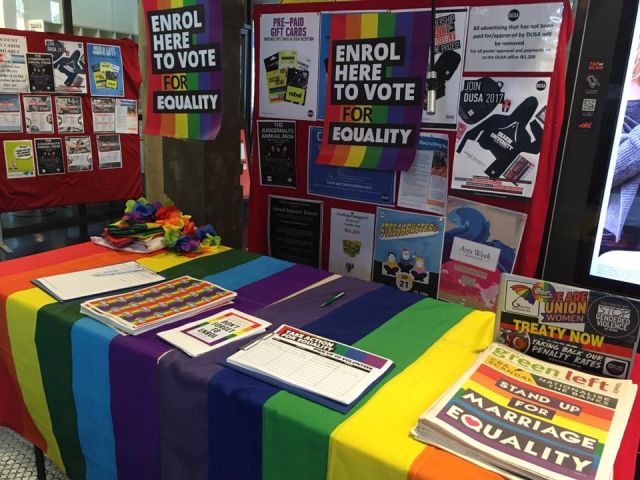
According to an Australian Electoral Commission (AEC) tweet, between August 8 and 22 the electoral roll increased by 54,545.
There were 577,879 total enrolment transactions processed in that time, including checking and updating enrolment details. This data does not include the last two days of the enrolment period, which closed at midnight on August 24, so these numbers are likely to increase.
Once all transactions are processed, the number of new voters should easily exceed 100,000. Electoral Commissioner Tim Rogers said he expected the total proportion of Australians on the roll, which was 95.3% on July 31, to reach a "record high" once processing was completed.
On campuses across the country there has been a concentrated national enrolment campaign, targeting 279,000 eligible young voters.
The National Union of Students, as well as the Young Workers Centre, trades halls, unions, queer collectives and other student clubs have mobilised on campuses across the country. They ran enrolment stalls, barbeques, impromptu dance parties and other events to encourage students to enrol to vote, update their details and to vote yes to marriage equality.
This tactic is based on lessons from the Brexit campaign in Britain, where the majority of young voters voted to remain, but were a small percentage of the voting population. In the Australian context of an optional collection of statistical data conducted via a postal survey, it has been even more crucial to encourage young voters in this process.
But this method has been criticised for being a hindrance to young voter participation. There have also been criticisms about accessibility for people with a disability, First Nations peoples living in remote communities and for eligible enrolled voters living or travelling overseas.
There has also been debate about whether 16- and 17-year-olds, who are already provisionally on the electoral roll, will be able to participate, given this is a collection of statistical data run by the Australian Bureau of Statistics (ABS) and not a formal vote run by the AEC.
A 17-year-old high school student from Victoria has a lodged a discrimination claim against the ABS with the Human Rights Commission which is likely to end up in the High Court. If this challenge is successful it would mean another 50,000 young people already on the electoral roll would be eligible to participate in the postal survey.
A number of lobby groups are also in the process of lodging a High Court challenge to stop the postal survey from going ahead altogether, which will not be heard until September 5. This would provide a window of only six days between a definitive answer from the High Court and when the government wants to send out the postal surveys.
It is critical that activists push ahead with a field campaign on the assumption that this postal survey is going ahead.
Phase one of the campaign was the enrolment push, particularly with young eligible voters. Next steps will be securing yes votes. Phone banking, letterboxing, door knocking, street and campus stalls will all be important to facilitate the conversations we need to be having with the broader community.
However, it is also important to call for mass mobilisations of people at rallies or walk for equality days around the country and not counterpose mass mobilisations to the one-on-one conversations that also need to be had.
To build a movement, and to empower activists, gathering in our thousands around the country is important to appreciate our own collective power and to counter the isolation that many in the queer community may be feeling.
After the postal survey forms are sent out, phase three of this campaign will be making contact with all those who have pledged to vote yes, to make sure that they have filled out their form and posted back it back. This could involve setting out large novelty rainbow post boxes on campus, in community centres or at trades halls. Exchanging completed survey forms for cupcakes, sausages or other forms of free food on campus, as well as other actions and stunts, such as banner drops, will be important.
The return of postal survey forms will be a long and drawn out process of eight weeks from when the forms are sent out to the final cut-off date for return on November 7. It will be important to push for early form returns.
It is critical that campaigning is supported by grassroots, democratic and transparent organising that includes the community. It is encouraging to see suburb-based campaigning groups popping up in Moreland and Footscray, as examples of this campaign broadening.
Activists and communities should be encouraged to take initiatives in their local areas where possible, as well as coming together for national days of action over the next two months.
Like the article? Subscribe to Green Left now! You can also like us on Facebook and follow us on Twitter.